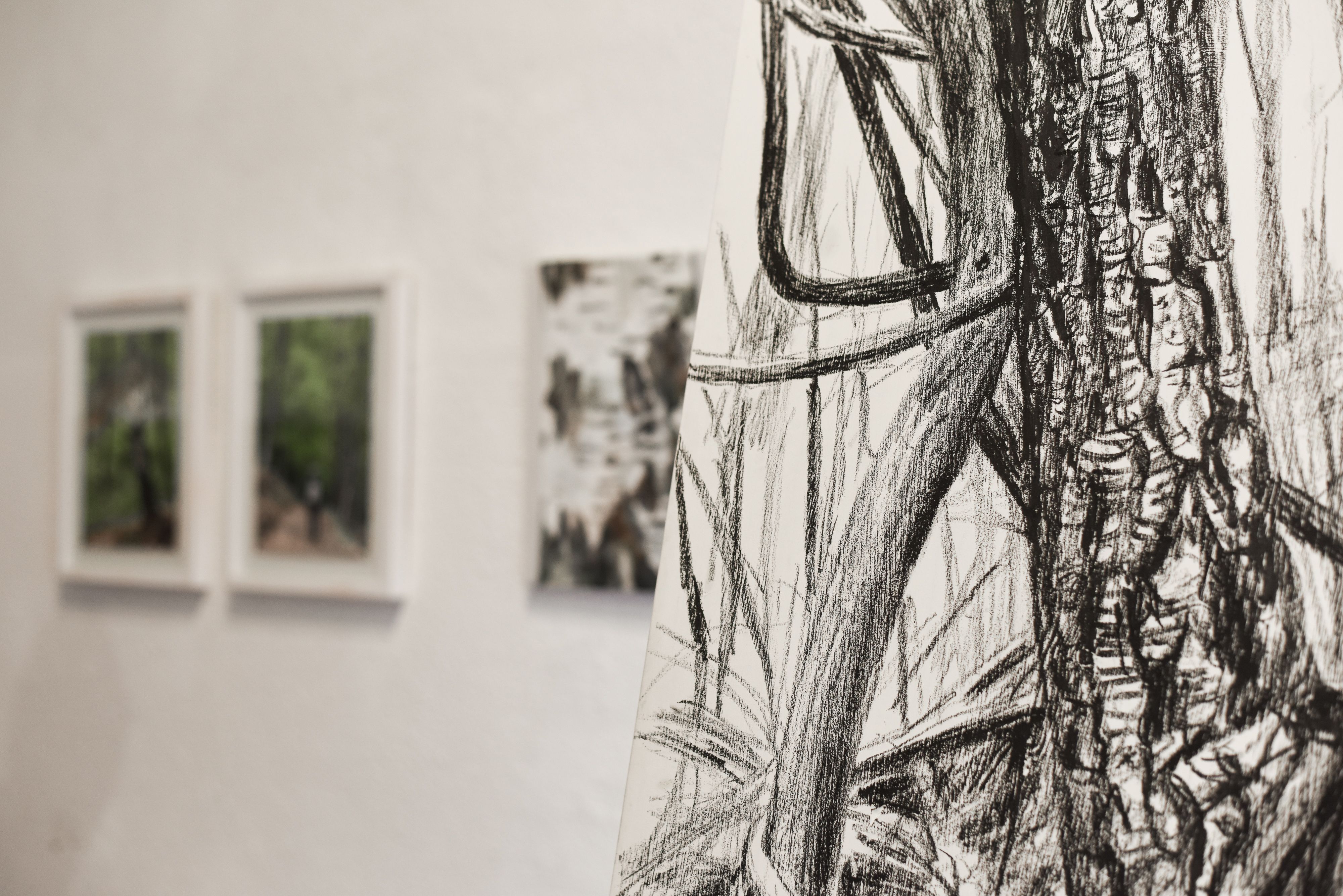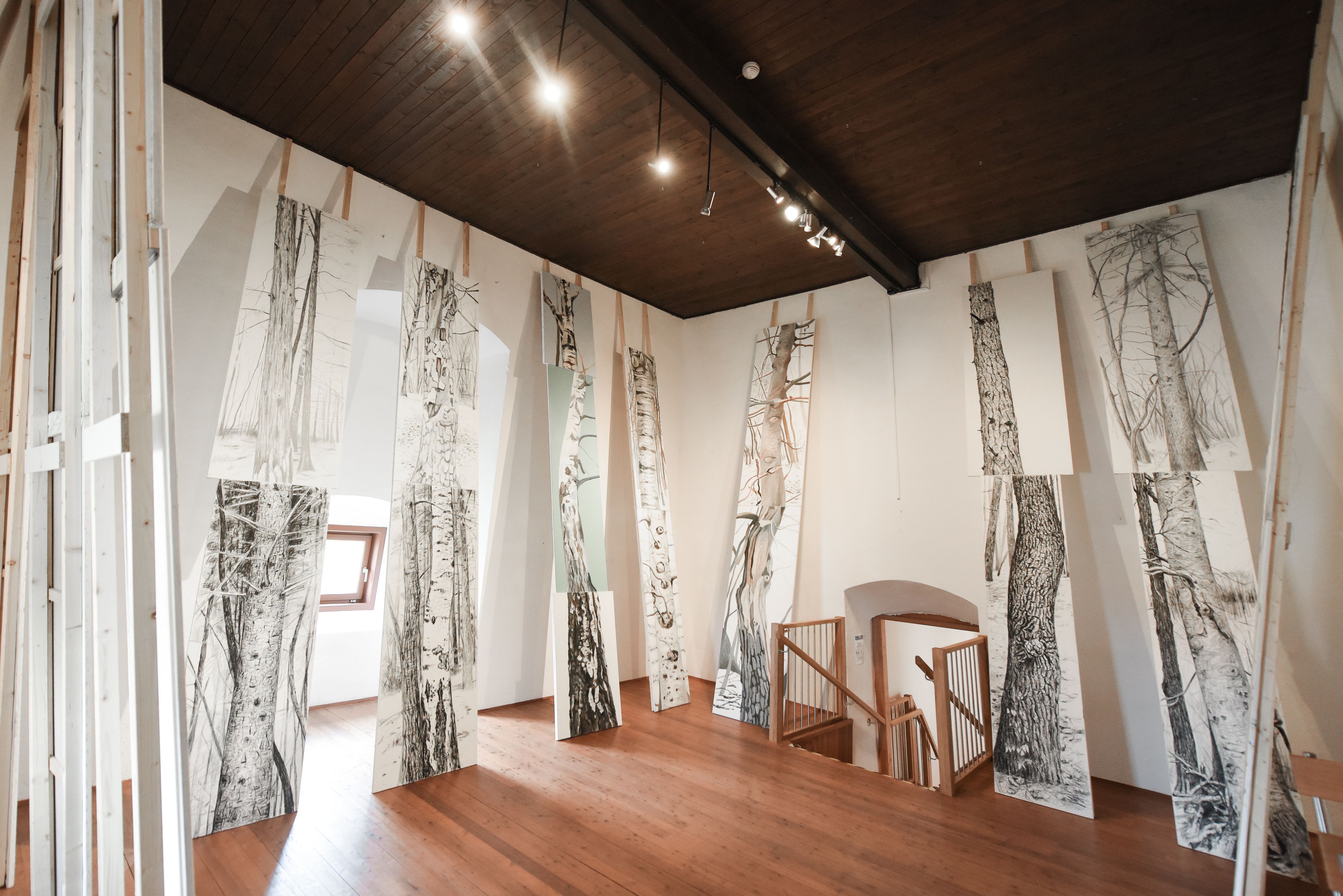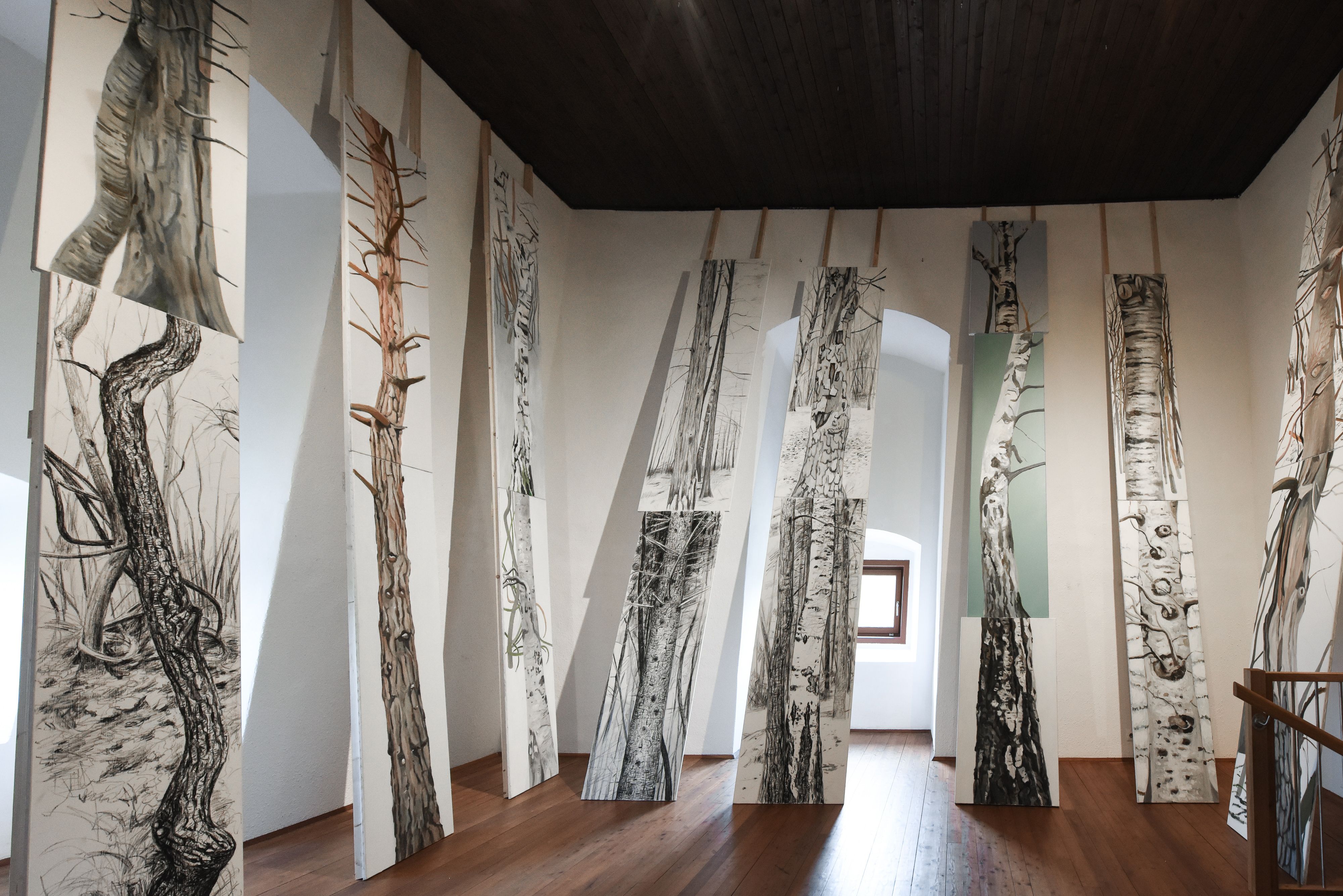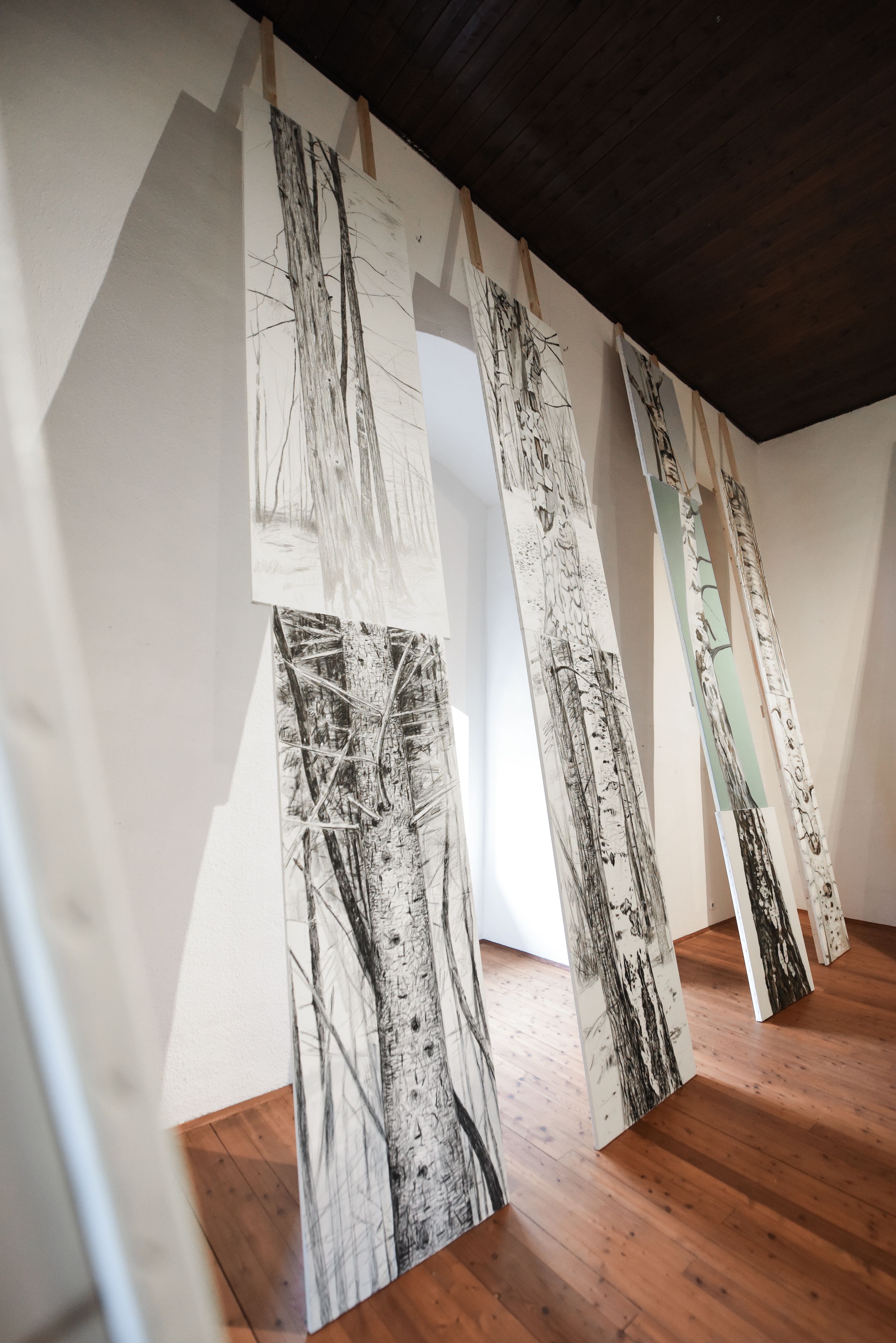Alois Mosbacher
:
Woods
Back
Information
The forest has been a key focus of Alois Mosbacher’s art for many years. Historically, it has acted as a surface on which people project myths and utopias, as well as the personal emotional worlds they seem to find there: from feelings of freedom to fear of danger. The woods are also a visual paradox: trees define spaces that they seem to clutter at the same time due to their structure, so to say—in other words, our gaze cannot roam freely in them. For Mosbacher, all of these conditions fascinate him about the forest as a motif.
Over the years, Mosbacher has created many series of works and exhibitions that explore the woods and their symbolic facets, including loneliness and retreating from society. He often creates an intellectual connection to the two Americans Henry William Thoreau and Theodore Kaczynski in his work. While Thoreau chose a “life in the woods” as an opportunity for an independent and self-determined lifestyle and became the pioneer of alternative ways of living, Kaczynski retreated to the woods before beginning a violent terrorist campaign against the system under the name “Unabomber.”
Mosbacher’s paintings, with their figurative motifs that often fluidly transition into abstraction, approach these themes from different perspectives in terms of content as well as form. His forest scenes are often void of humans, while the pictorial space is frequently characterized by their traces—abandoned cabins, discarded furniture, and consumer trash. Sometimes subtly, sometimes obviously, his view of the forest captures the tension-filled relationship between humans and nature. He is not interested in dreamy, romanticized landscapes, but in complex questions about the individual and society, nature and consumption—questions he in turn poses to the beholders through the motif.
Mosbacher also addresses this multifaceted network of relations between humans and nature in his exhibition Woods in which he severs painting from its classical principle of being looked at from the outside, thereby making us a part of his painting and the issues he is exploring. For this, he transformed the tower room in Orth Castle into an artificial forest. He installed a number of his painted tree trunks, which are several meters tall, around it to create a direct connection between outside and inside, nature and culture, letting these dissolve into one another in an intentionally confounding manner. In his video Eremit (Hermit), he refers to the lifestyles of hermits and other people who drop out of society and find a refuge in the forest. Outside the castle, in its immediate surroundings, the artist has staged a meeting between model and picture by attaching small paintings to several trees in which the tree trunk behind them is represented, thus inspiring a both playful and serious discussion about our relationship to nature and, in a certain way, to art.
“Wald – Wissenschaft/Ökologie/Kunst” (Forest: Science/Ecology/Art)
On the occasion of the exhibition’s opening, a conversation was organized in which the ecological, social, philosophical, and artistic aspects of the forest were debated. The invited experts discussed connections between an ecologically motivated occupation of Donau-Auen wetlands, scientific research, and an art theoretical discourse.
Lóránd Hegyi, art historian, former director of the MUMOK, Vienna
Andreas Rigling, director of the Research Unit Forest Dynamics at the Swiss Federal Institute for Forest, Snow and Landscape Research at the ETH Zurich
Manfred Rosenberger, biologist and historian, Donau-Auen National Park; co-organizer of the occupation of the wetlands in 1984
Contributors
- Kuration




